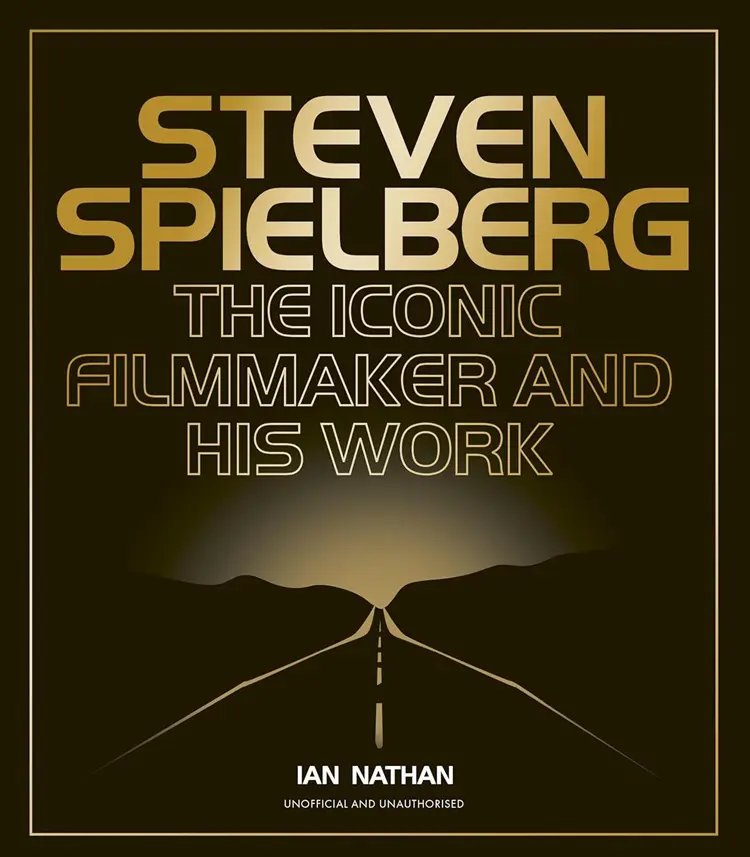
This new book is an unauthorized and unofficial study of one of the most universally admired directors to ever put a story in moving pictures. Steven Spielberg: The Iconic Filmmaker and His Work (2024) (White Lion Publishing) is a chronological journey through the works of the director, more or less grouped by the different eras of his life. I hold the director among the quote unquote Mount Rushmore of the profession along with John Ford, Alfred Hitchcock and Akira Kurosawa. Each have different mastery of the art, but Spielberg has accomplished, like the others, creating a genre unto himself, the Spielberg Film.
Buy Steven Spielberg: The Iconic Filmmaker and His WorkNathan separates the key films of Spielberg’s early career into three sections, including “The Big Fish,” “Shock and Awe,” and “Phenomenon.” There could be (and are) full books dedicated to each of the films in what has to be one of the best runs of four out of five films – Jaws (1975), Close Encounters of the Third Kind (1977), Raiders of the Lost Ark (1981) and E.T.: The Extra-Terrestrial (1982). It’s hard to know how to keep the focus when discussing these films without giving the impression that you are leaving out some important details. The author does a good job with the Jaws to Close Encounters transition, after his first mega-hit. I appreciated the perspective given to the acting in E.T.. I agree with Nathan that the naturalistic technique is virtually invisible, and the actors here don’t get enough credit.
I was taken with the “Between Worlds” section that covers the era from Minority Report (2002) through Indiana Jones and the Kingdom of the Crystal Skull (2008). “With Kubrick’s death in 1999, he
had lost not a peer but, cinematically speaking, a father figure.” (pg. 128) I had not put this group of films into that perspective. A.I.: Artificial Intelligence (2001) benefits from Spielberg’s touch directly in comparison with Kubrick’s vision. The next group of films can be viewed as living in that shadow in one way or another. I had viewed this period of his work as coming out of his history focused period of Schindler’s List, Saving Private Ryan and his television productions. When that period is balanced against the reactions to 9/11, Steven portrays multiple visions of the American Dream: past, present and future.
I particularly agree with the author’s interpretation of Munich (2005). “Spielberg was humanizing genre and humanizing history.” (pg. 145) This is the film that I struggle with the most because I can equally defend or condemn the storytelling. It’s a fascinating story, and I think it’s fair to say it’s a function of the time he made it as much as the subject matter.
The book finishes with “Forever Young” as Spielberg goes to the well over and over with nostalgic and youthful subject matter (leaving out The Post (2017) which seems like a “lost” Spielberg film from a decade or more previous). This section is one of the shortest, and it might be my only quibble with the book. This era is easily written off as an old man looking wistfully at younger days. There are themes that reflect more upon today’s youth in Ready Player One (2018) and West Side Story (2021) than upon the era of their setting.
It’s a daunting project to write about the director of his era when so much has previously been written. It’s an era where all of his movies seem to have extensive commentaries and their own documentaries. The director himself has give us The Fabelmans (2022) as his own take on his legacy. This book has a good selection of photos. The picture-to-text ratio makes it an easy read. The focus stays on the films, and I would love a follow-up with his Executive Producer projects that often reflect the same themes that are running through his directed films in each era. In the meantime, put this one on your holiday list.